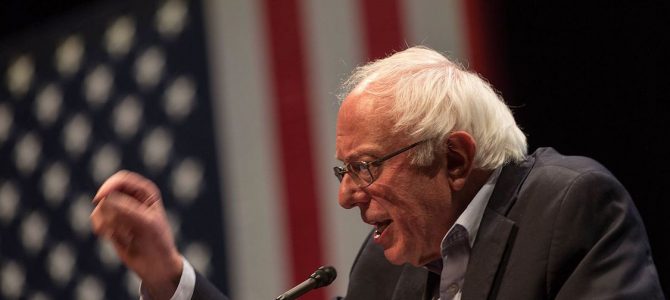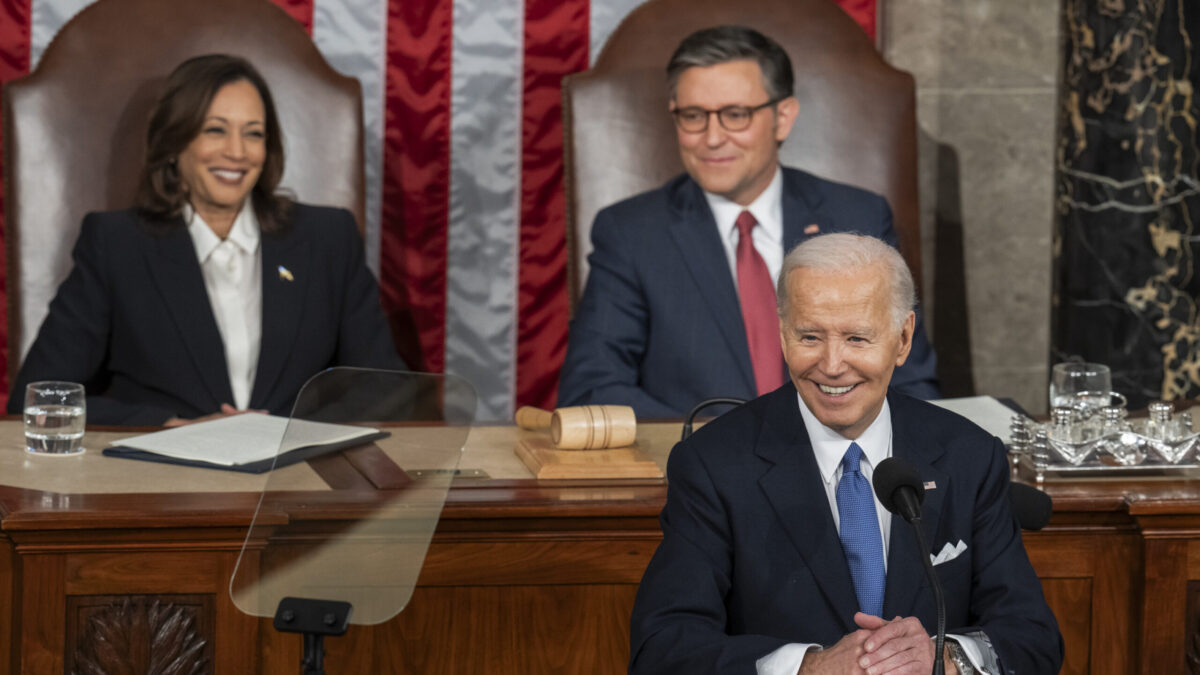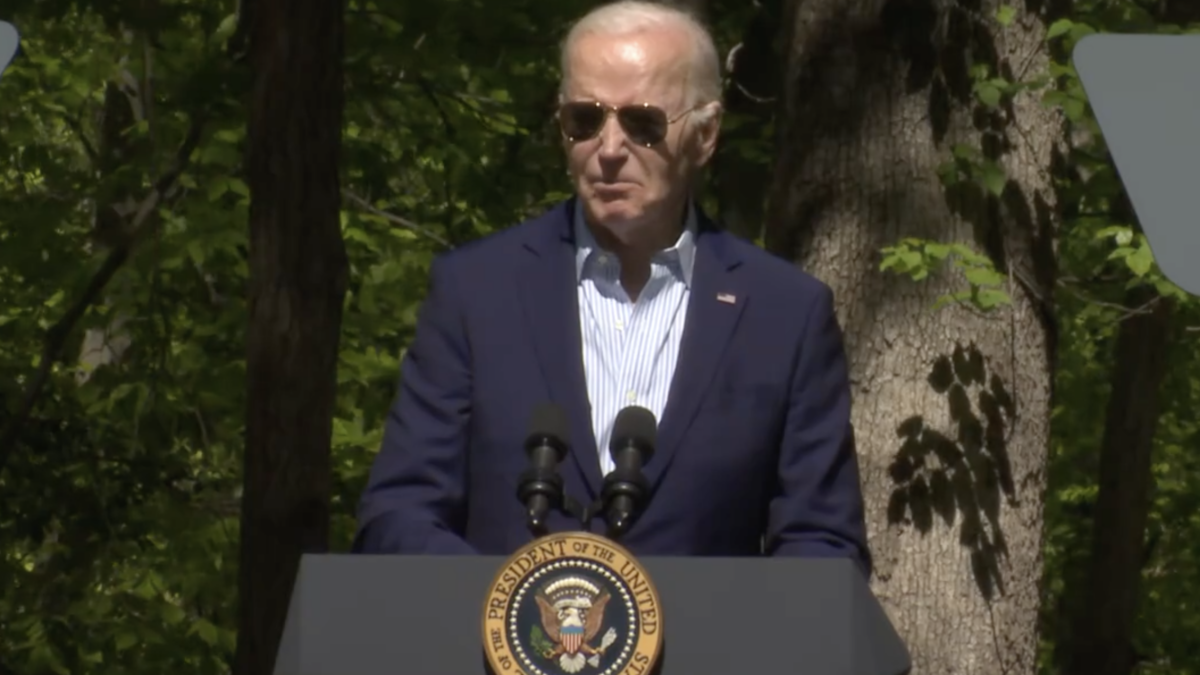
This week, newly minted Democratic National Committee Chairman Tom Perez will travel cross-country with Sen. Bernie Sanders and Rep. Keith Ellison on a Democratic Party “unity tour” that will take them to Maine, Kentucky, Florida, Texas, Nebraska, Utah, Arizona, and Nevada—mostly red states that Trump won.
The purpose of their road trip, dubbed the “Come Together And Fight Back Tour,” is to shore up a badly fractured Democratic Party and present some semblance of a united opposition to the Trump administration. (The tour is selling T-shirts that boast, “I’m one of 65,844,610 Americans against Trump.”)
Whatever the merits of hawking anti-Trump shirts and uber-progressive talking points in Grand Prairie, Texas, the fact that Perez feels the need to embark on such a tour with Sanders and Ellison in tow speaks volumes about the transformation of the Democratic Party under Obama.
Put simply, this is Sanders’ party now. The avowed socialist’s insurgent presidential campaign last year exposed a sclerotic Democratic Party leadership woefully out of touch with its progressive base—a base that was at times openly hostile to the party’s designated heir apparent, Hillary Clinton, and completely uninterested in appeals to the white working class.
Recall that Sanders made economic populism the centerpiece of his campaign, and some of his rhetoric on that score mirrored Trump’s. But his most fervent supporters were always more interested in socialism and identity politics—free college and amnesty for illegal immigrants—than bringing manufacturing jobs back to the Rust Belt.
Democrats Have Jumped the Shark
Now, Sanders is the Democratic Party’s only credible messenger to that base, which is why Perez desperately needs Sanders with him as he rolls through flyover country. The partnership is not without some irony. Back in February, Perez narrowly defeated Sanders’ preferred candidate to run the DNC, Keith Ellison. The Perez-Sanders-Ellison spectacle is therefore a testament not just to the leftward lurch of Democrats, but also of their desperation and disorientation.
Party leaders have concluded, quite incorrectly, that if they want to be competitive at the state and national levels they must adopt the economic socialism of Sanders and the identity politics of Ellison, an African American and one of only two Muslims in the House.
But Ellison is also a fervent progressive and a radical leftist. Besides being the co-chair of the Congressional Progressive Caucus and an early endorser of Sanders, he has some rather disturbing ideas about Israel and Jewish people, an abiding affection for Nation of Islam leader Louis Farrakhan, and a host of other deeply unsettling views.
Perez, by contrast, belongs to the Democratic Party establishment. He served as secretary of Labor under Obama, who endorsed him for DNC chair along with a number of Democratic governors and other establishment-aligned Democrats. When his victory was announced, Ellison supporters erupted in protest, shouting, “Party for the people! Not big money!” When Perez was finally allowed to speak, he immediately named Ellison as deputy chairman.
The message now, of course, is unity at all costs. Yet even before the unity tour kicked off, Sanders and Perez were butting heads over another lost election. Last Tuesday, Republicans won a special congressional election in Kansas for the seat Mike Pompeo vacated when he was confirmed to be Trump’s director of the Central Intelligence Agency.
On Sunday, Sanders called out the Democratic Party for not doing enough to help win that election. The next day, Perez shot back on NPR, claiming that the DNC offered its voter file, conducted robocalls, and, despite losing, basically won because it wasn’t a blowout. “If we replicate success like that everywhere, we will flip the House in 2018,” he said, adding, as if to convince himself, “And we’re making tremendous progress.”
The Real Transformation of U.S. Politics Is On the Left
All this inside baseball of the Democratic Party is notable for how little attention it has gotten in the mainstream media, which lately has been far more interested in how Trump is supposedly changing conservatism. Last week in The New York Times Magazine, Rick Perlstein, a left-wing academic who bills himself as an historian of conservatism, confessed that Trump’s election revealed that his own account of conservatism is incomplete, if not flat-out wrong.
His argument is more or less that Trump’s conservatism belongs to a long history of white rage in America, harkening back to the Ku Klux Klan of the 1920s and pro-Nazi fascist groups of the 1930s. In Perlstein’s tortured history of American conservatism, you can draw a line from Hiram Evans, imperial wizard of the KKK in the 1920s, to Joseph McCarthy in the 1950s, Barry Goldwater in the ‘60s, and President Trump today.
It’s an absurd argument that could only be put forward by a left-wing academic whose understanding of American conservatism was never more than caricature, and who has indulged a general ignorance of changes to the American electorate since the Second World War.
A more measured take on Trump and conservatism ran last week in The Atlantic, whose McKay Coppins suggested “there’s evidence that Trump’s conquest of the GOP is causing activists to redefine ‘conservatism’ itself.” All of that is well and good. Certainly, Trump is challenging some orthodox conservative positions, especially on free trade and government spending.
But for all the changes afoot in the GOP, the real transformation in American politics is happening on the Left, where progressive zealots have taken over the Democratic Party and all but named Bernie Sanders their quixotic leader.
The irony is that those who lionize Sanders still don’t seem all that concerned about the things he cares about. Asked about the unity tour earlier this month, Sanders said, “It’s absolutely absurd that the Democratic Party has turned its back on working people in literally half the country.”
Sanders is right on that count. Working-class Democrats voted for Trump last year in all the places Clinton needed them to vote for her. Sanders’ concern about his party’s alienation of these voters is justified. The problem is, he’s now the de facto leader of a party that has embraced his socialism but written off the white working class, which it needs to win national elections.
The Democratic Party seems to sense that it needs these voters, but it has no idea how to get them back. So off Sanders goes to literally half the country, arm-in-arm with Perez and Ellison, hoping to find support for the post-Obama Democratic agenda.
Maybe they’ll find some support, but their progressive message is likely to resonate only with whatever socialists they find in Utah or transgender activists they find in Nebraska. Maybe that will revive their electoral ambitions for the 2018 midterms. Maybe they’ll run on that. Let’s hope they do.








